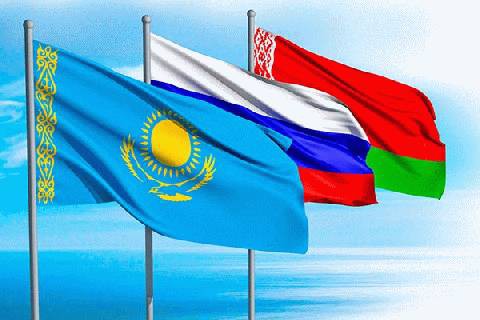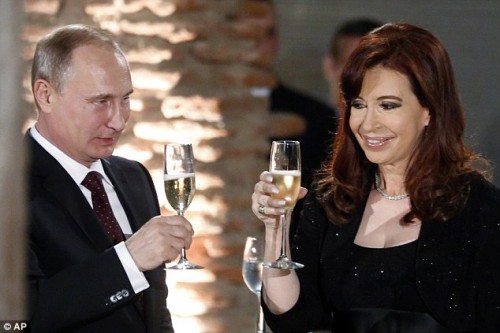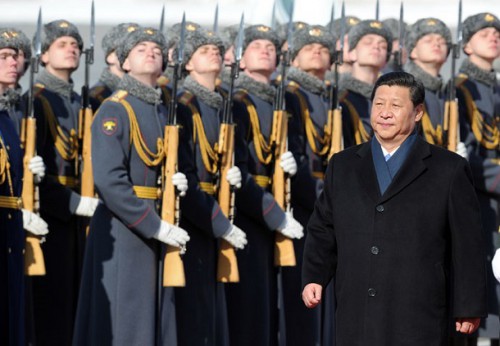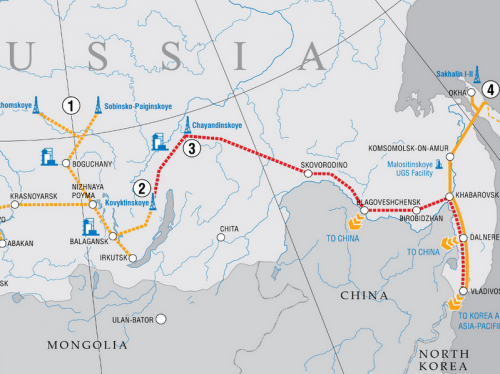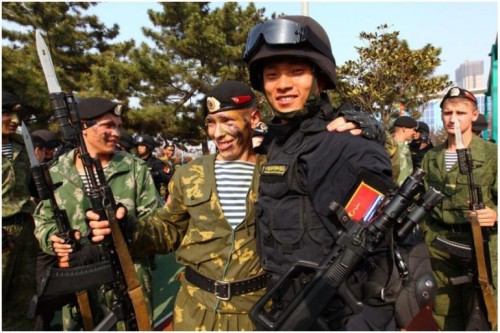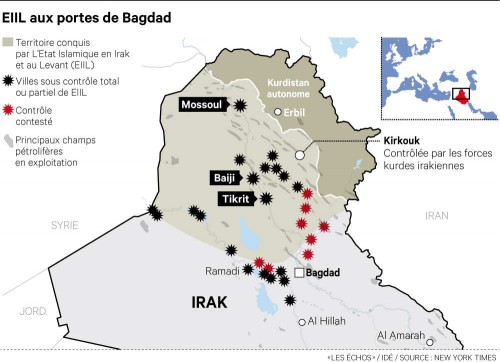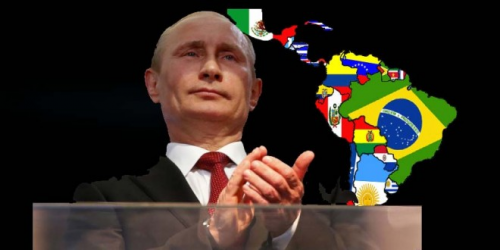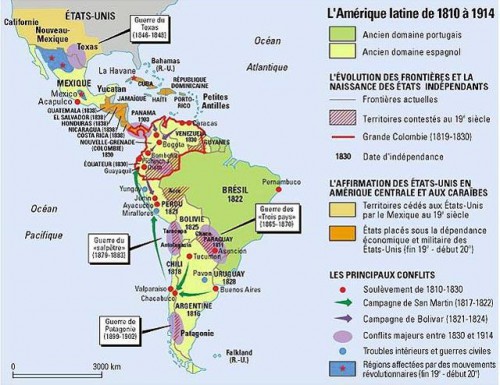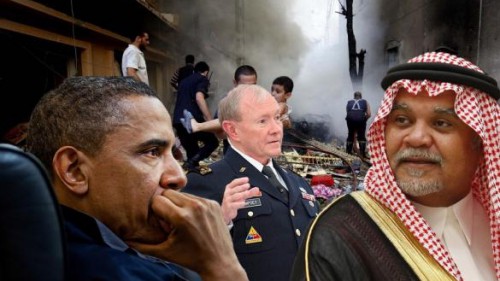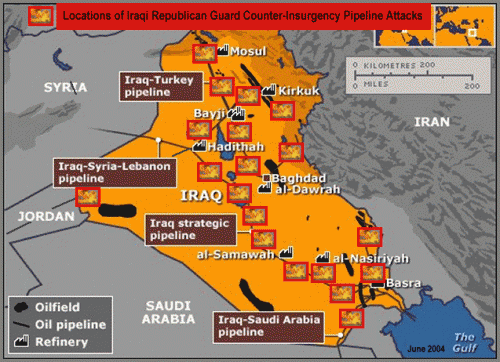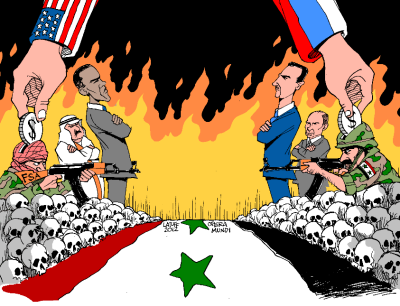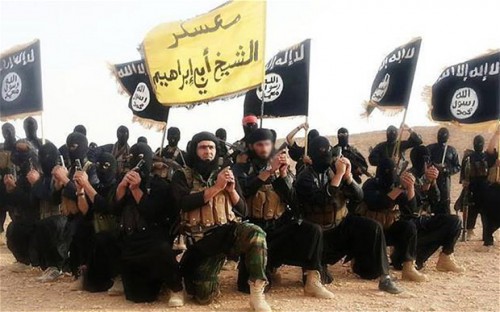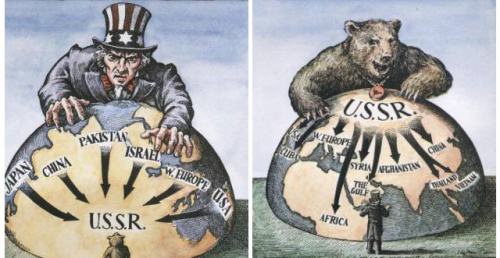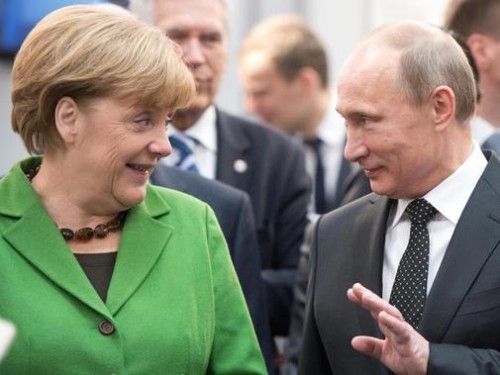"Estamos interesados en una América Latina unida, fuerte, económicamente sostenible y políticamente independiente, que se esté convirtiendo en una parte importante del mundo policéntrico y emergente", afirma el presidente de Rusia, Vladímir Putin.
El líder ruso hizo varias importantes declaraciones en una entrevista concedida a las agencias Prensa Latina e Itar-Tass en vísperas de su gira por varios países latinoamericanos. Abordó un amplio abanico de temas de interés común desde la cooperación comercial hasta el relevo de la Copa Mundial de Fútbol, que se encuentra en su recta final en Brasil para trasladarse luego a Rusia, que acogerá los partidos del Mundial 2018.
El respeto de Latinoamérica a la libertad y a otras culturas
Según el presidente ruso, en la región latinoamericana "son fuertes las tradiciones del respeto a la libertad, respeto a otros pueblos y otras culturas y, normalmente, son casi nulas las contradicciones entre Estados; tampoco hay ganas de seguir el juego de 'divide y vencerás'. Al revés, están dispuestos a trabajar conjuntamente para defender su casa latinoamericana común".
Putin aseguró que actualmente la cooperación con los Estados de América Latina es una de las direcciones claves y muy prometedoras de la política exterior de Rusia. "El multilateralismo en los asuntos mundiales, el respeto al derecho internacional, el fortalecimiento del papel central de la ONU y el desarrollo sostenible son los principios que nos unen", enfatizó. El mandatario ruso agradeció a los sudamericanos por su apoyo en las iniciativas internacionales promovidas por Rusia, "incluidos la desmilitarización del espacio, el fortalecimiento de la seguridad internacional en materia de información, la inadmisibilidad de la glorificación del nazismo".
"Es crucialmente importante para nosotros que en las relaciones entre Rusia y América del Sur se mantenga una continuidad que refleje los intereses fundamentales y nacionales, independientemente de la formación política que lidere en uno u otro país de la región en este momento", afirmó.
La idea de imponer a naciones los modelos de desarrollo ajenos es inconsistente
En relación al actual orden mundial, el presidente ruso considera que "el mundo del siglo ХХI es global e interdependiente, por lo cual ningún Estado o grupo de Estados puede resolver los principales problemas internacionales por su cuenta. Asimismo, cada intento de establecer algún 'oasis de estabilidad y seguridad' está condenado al fracaso".
Según Putin, los diversos desafíos y amenazas de los tiempos modernos exigen negarse a los intentos de imponer a otras naciones los modelos de desarrollo ajenos. Advirtió que "esa actitud ya había demostrado su inconsistencia. No solo no ayuda a arreglar los conflictos, sino lleva a la inestabilidad y al caos en asuntos internacionales".
Refiriéndose al escándalo del espionaje masivo de EE.UU., opinó que "no solo se trata de una hipocresía pura en las relaciones entre los aliados y los socios, sino también de un ataque directo a la soberanía de un Estado, una violación de los derechos humanos y de la privacidad". Aseguró que Rusia está dispuesta a cooperar a la hora de elaborar un sistema de medidas para garantizar la seguridad de información internacional.
La Celac y la Unión Aduanera, dispuestas a cooperar
En referencia a la integración ruso-latinoamericana, el presidente ruso calificó como prometedor el establecimiento de contactos entre la Celac y los países miembros de la Unión Aduanera, el Espacio Económico Común.
"Estamos abiertos a interactuar de manera sustancial también con otras asociaciones de integración en la región latinoamericana, incluso en el marco de la comunidad que está emergiendo. Me refiero a la Unión de Naciones Suramericanas (Unasur), el Mercado Común del Sur (Mercosur), la Alianza Bolivariana para los Pueblos de Nuestra América (Alba), la Alianza del Pacífico (AP), el Sistema de la Integración Centroamericana (SICA) y la Comunidad del Caribe (Caricom)", aseguró.
Especificó que Rusia está interesada en crear alianzas plenas, tecnológicas, de proyectos y producción con los países de la región, aprovechar al máximo las posibilidades de las economías complementarias, cooperación en materias tan importantes como la petrolera y la gasífera, la hidroenergía y la energía atómica, la construcción de aviones y de helicópteros, las infraestructuras y, en los últimos tiempos, también la biofarmacia y la tecnología de la información.
"Aprecio mucho el diálogo con la presidenta argentina"
Argentina es hoy el principal socio estratégico de Rusia en América Latina, en la ONU y en el G20. "Nuestra visión de las principales cuestiones de política internacional es parecida o coincidente. Igualmente entendemos que es necesario formar una estructura mundial nueva, más justa y policéntrica que se base en el derecho internacional y en el papel central coordinador de la ONU", afirmó Putin que también mencionó el aprecio que tiene "al diálogo constructivo y confidencial con la presidenta Cristina Fernández de Kirchner".
"En la última década el volumen del comercio ruso-argentino se ha multiplicado por seis y ha alcanzado un punto firme de 1.800 millones de dólares que nos permite considerar a Argentina uno de los principales socios económicos y comerciales de Rusia en la región de América Latina", dijo. Añadió que se prestará una atención especial a la intensificación de la cooperación tecnológica e inversionista especialmente en los sectores de energía, energía atómica y maquinaria. Además, mencionó la cooperación en la Antártida que "nos parece prometedora".
Sobre la posibilidad de la integración de Argentina al grupo BRICS, afirmó que Rusia aprecia el deseo del Gobierno argentino de unirse al grupo, aunque especificó que por el momento la cuestión de aumentar el número de miembros del BRICS no se contempla desde el punto de vista práctico. "Primero se deben optimizar los numerosos formatos de cooperación establecidos en el grupo", concluyó.
En Cuba, Rusia está dispuesta "a recuperar las oportunidades perdidas"
Las relaciones ruso-cubanas se basan en una larga tradición de amistad inquebrantable y en la gran experiencia de una cooperación fructífera que es única en muchos aspectos. "En los años noventa del siglo XX los ritmos de nuestra cooperación bilateral se redujeron un poco y los socios extranjeros de otros países nos dejaron atrás en varias áreas", confesó Putin. Sin embargo, el presidente ruso aseguró que los dos países están dispuestos a recuperar las posibilidades perdidas.
"Hoy Cuba es uno de los principales socios de Rusia en la región. Nuestra cooperación es de carácter estratégico y está orientada a largo plazo. Tenemos una coordinación estrecha en el campo de la política exterior y en el marco de las organizaciones multilaterales. Nuestras posturas respecto a muchos temas globales y regionales coinciden", afirmó.
Especificó que actualmente se estudian unos grandes proyectos en el campo de la industria y las altas tecnologías, la energía, la aviación civil, el uso pacífico del espacio cósmico, la medicina y la biofarmacia. "Una de las más importantes áreas de nuestro trabajo conjunto es intensificar los intercambios culturales".
Además el presidente contó que debido al desarrollo en Cuba de la Zona Económica Especial de Mariel, han mostrado su interés por emprender la cooperación una serie de empresas rusas especializadas en particular en la fabricación de productos metálicos y plásticos, de piezas de repuesto para automóviles, en ensamblaje de tractores y en el montaje de maquinaria pesada para la industria ferroviaria.
Se refirió también al proyecto de la compañía Zarubezhneft S.A. que en agosto del 2013 comenzó la perforación del primer pozo de explotación en el yacimiento Boca de Jaruco.
El potencial de la cooperación con Brasil no está desarrollado completamente
El presidente confirmó que Rusia apoya a Brasil como candidato digno y fuerte para un puesto permanente en el Consejo de Seguridad de la ONU y se mostró seguro de que este país potente y de rápido crecimiento tiene una función importante en la formación de la nueva estructura mundial policéntrica.
Según el presidente ruso, a pesar que desde hace mucho tiempo Rusia y Brasil desarrollan activamente el diálogo político, la cooperación militar, técnica y cultural, el potencial de la cooperación económica y comercial con Brasil no se está aprovechado completamente. "Además, en este contexto de inseguridad en la economía mundial se ve cierta reducción del intercambio comercial bilateral (3,3% en 2013). Para corregir esa situación necesitamos diversificar los vínculos comerciales: aumentar los suministros de artículos de alta tecnología y maquinaria, desarrollar la cooperación en las áreas de aviación y energía y en la agricultura".
Relevo en la sede del Mundial: desde Brasil a Rusia
El jefe de Estado ruso contó que por invitación de la presidenta de Brasil y del presidente de la FIFA asistirá a la final del campeonato para participar en la ceremonia del traspaso del país anfitrión a Rusia. "En 2018 Rusia acogerá por primera vez en su historia este evento deportivo mundial tan popular. En febrero y marzo ya celebramos los Juegos Olímpicos y Paralímpicos de Invierno en Sochi y sabemos muy bien lo difícil que es organizar un evento de estas dimensiones", precisó.
Aseguró que Rusia sigue de cerca la experiencia de Brasil, que también va a organizar los Juegos Olímpicos en 2016. Sin embargo, reveló que en algunos aspectos Rusia planea ir más allá del país anfitrión del Mundial 2014. "Hemos incluido en la ley federal un régimen de visados especial para los extranjeros que van a ayudar a preparar el campeonato del 2018. En la víspera de las competiciones y durante su celebración no solo todos sus participantes oficiales –deportistas, árbitros, entrenadores etc.– sino también los hinchas podrán visitar Rusia sin visados. Esto es un evento sin precedentes en la historia de los campeonatos de fútbol", concluyó.
Finalmente, el presidente destacó la participación latinoamericana en el Mundial. Dijo que lo seguía de cerca cuando se lo permitía el horario y pudo apreciar el "brillante y espectacular fútbol" que han mostrado las selecciones de los países latinoamericanos.
¿Por qué la gira de Putin por América Latina es histórica? Conozca sus puntos clave
Bolivia, Cuba, Argentina, Brasil, Ecuador, Venezuela, Colombia, Guyana, Paraguay, Perú, Surinam y Chile: estos son los países cuyos líderes se reunirán con el presidente ruso, Vladímir Putin. Aquí presentamos los puntos clave de esta gira histórica.
Putin visitará América Latina del 11 al 16 de julio. Los medios coinciden en señalar esta gira como histórica, ya que en cuatro días Putin completará un programa de reuniones sin precedentes. Prevé visitar tres Estados latinoamericanos y participar en la cumbre del grupo BRICS y en un foro adicional con los 12 líderes de América del Sur.
Argentina
Por primera vez Putin se reunirá con su homóloga argentina, Cristina Fernández de Kirchner, en el país latinoamericano. Previamente los líderes habían podido verse solo en el marco de eventos protocolarios como la cumbre del G20 en San Petersburgo.
Durante la visita del mandatario ruso a Argentina el 12 de julio, Putin y Kirchner tienen previsto discutir las formas de cooperación de ambos países en la ONU y el G20, así como la posibilidad de ampliar la cooperación en el marco de los formatos de integración regional: Mercosur, Unasur y las perspectivas de cooperación entre los BRICS y la SELAC.
Se espera que se firme un acuerdo intergubernamental sobre la cooperación en el campo de la energía atómica con fines pacíficos.
Brasil
En Brasil Putin participará en la cumbre del BRICS, asistirá a la final de la Copa del Mundo en la ciudad de Río de Janeiro y tiene previsto participar en la simbólica ceremonia en la que Brasil entregará el relevo de la organización de la Copa del Mundo a Rusia, donde en 2018 se celebrará este evento deportivo. Rusia se compromete a sacar provecho a la experiencia brasileña.
Al día siguiente, en la capital brasileña Putin se entrevistará con la presidenta Dilma Rousseff en el marco de conversaciones bilaterales. Los presidentes tienen previsto firmar contratos sobre energía, sanidad, transporte, agricultura, aduanas, cultura y educación. Putin y Rousseff coordinarán la actuación de sus países en la ONU, el bloque BRICS, el G20 y la OMC, así como mediante la integración regional.
Cuba
Putin se reunirá con los hermanos Castro y firmará documentos sobre cooperación industrial, energía, aviación, sanidad y situaciones de emergencia. Uno de los proyectos clave es la creación cerca de La Habana de un centro de transporte que incluirá el aeropuerto internacional de San Antonio de los Baños, una terminal de carga y un puerto marítimo. El proyecto prevé atraer la inversión extranjera.
BRICS
El 15 y el 16 julio en la cumbre del BRICS Putin llevará a cabo una serie de reuniones bilaterales breves con los líderes de China, Xi Jinping, Sudáfrica, Jacob Zuma, la India, Narendra Modi, Venezuela, Nicolás Maduro, Uruguay, José Mujica, y Bolivia, Evo Morales.
Por primera vez Putin podrá contactar personalmente con Mujica, así como con Modi.
"La primera reunión personal entre Putin y Modi tiene como objetivo confirmar la actitud general para preservar la continuidad y garantizar el desarrollo sostenido de las relaciones privilegiadas de asociación estratégica entre los dos países. Se espera que se prestará especial atención a la preparación de la próxima cumbre ruso-india, que este año se llevará a cabo en la India", señalan los portavoces del Kremlin.
"La reunión de Putin con Xi Jinping será la tercera de este año. Los dos líderes discutirán los avances de los acuerdos de Shanghái, incluido el suministro de gas. Las partes planean discutir temas candentes de la agenda internacional, en particular en el contexto de la profundización de la coordinación de la política exterior de Rusia y China en el ámbito internacional", señalan los portavoces del Kremlin.
El dólar, camino a la irrelevancia: la estrategia antidólar de los BRICS toma forma
La presidenta del Banco de Rusia viajará a China para concretar un sistema de intercambio rublo-yuan que también se discute a nivel de los BRICS. Analistas creen que el dólar va camino a la irrelevancia y que el mismo EE.UU. cava su propia tumba.
La presidenta del Banco Central de Rusia, Elvira Nabiulina, se reunió esta semana con Vladímir Putin para informarle sobre el progreso del próximo acuerdo de intercambio rublo-yuan con el Banco Popular de China "a fin de facilitar el comercio". "Estamos discutiendo con China y con nuestros socios del BRICS el establecimiento de un sistema de intercambio multilateral que permita transferir dinero a uno u otro país si es necesario", indicó la presidenta del Banco de Rusia, agregando que la próxima semana tendrá una reunión en Pekín.
Según el diario 'The Voice of Russia', "los intercambios de divisas entre los bancos centrales de los países BRICS facilitarán la financiación del comercio y evitarán completamente el dólar". Según el rotativo, el nuevo sistema podría también actuar como una especie de FMI, ya que permitirá "a los miembros de la alianza dirigir los recursos para financiar a los países más débiles".
Aunque algunos analistas consideran que una alianza antidólar no podrá privar a la divisa estadounidense de su estatus de moneda de reserva mundial, hay quienes expresan la importancia de establecer una alianza internacional de países dispuestos a deshacerse de esta. Por su parte, Andréi Kostin, presidente del banco estatal ruso VTB, recordó en el canal Rossía 24 que el presidente del Banco de Francia propuso, como represalia a la millonaria multa impuesta por Washington al banco francés BNP Paribas, que el comercio con China se hiciera en yuanes o euros.
"Si esta tendencia actual continúa, pronto el dólar será abandonado por la mayoría de las economías mundiales importantes y será expulsado de la financiación del comercio global", reseña 'The Voice of Russia', agregando que "la intimidación de Washington" hará que incluso los aliados de EE.UU. den la espalda a las políticas internacionales impuestas desde la Casa Blanca. "El dólar puede estar ya más allá de su punto de no retorno en su camino hacia la irrelevancia", concluyó.
Rusia propone a los BRICS crear un banco de combustible
Rusia ha propuesto establecer una asociación energética de los BRICS que incluiría la creación de un banco de combustible de reserva y de un instituto de energía, dijo el asistente presidencial Yuri Ushakov.
"Rusia tiene la intención de proponer a la consideración una serie de temas específicos, a saber: una asociación energética de los BRICS cuyas actividades estén dirigidas a garantizar la seguridad energética de los países participantes, llevar a cabo la investigación y el análisis de los mercados mundiales de hidrocarburos. En el marco de esta asociación proponemos un banco de combustible de reserva y el Instituto de la Política Energética de los BRICS", dijo Ushakov, y agregó que el presidente ruso, Vladímir Putin, anunciará estas iniciativas en la cumbre del grupo en Fortaleza de los días 15 y 16 de julio.
Además, Rusia también propone la creación de una universidad que reúna los principales centros educativos superiores de los cinco países y que se especialice en temas económicos y técnicos.
Durante la cumbre del BRICS en Fortaleza, los líderes de Brasil, Rusia, India, China y Sudáfrica crearán el Banco de Desarrollo, cuya oficina principal estará en Shanghái, añadió Ushakov, citado por Itar-Tass.
Además del Banco de Desarrollo, los BRICS crearán la Fundación de Reservas de Divisas, que contará con 100.000 millones de dólares. Las obligaciones de los países se distribuirán de la siguiente manera: Rusia, India y Brasil proporcionarán 18.000 millones de dólares cada uno; Sudáfrica, 5.000 millones; y China, 41.000 millones.
Una reunión plenaria de la cumbre del BRICS se dedicará a la búsqueda de nuevas fuentes de crecimiento económico. Además, los líderes de los cinco países se reunirán con la presidencia del Consejo Empresarial de los BRICS.








 del.icio.us
del.icio.us
 Digg
Digg
 Putin: Europa braucht “Versicherungsnetzwerk” gegen Maidan-Szenarien
Putin: Europa braucht “Versicherungsnetzwerk” gegen Maidan-Szenarien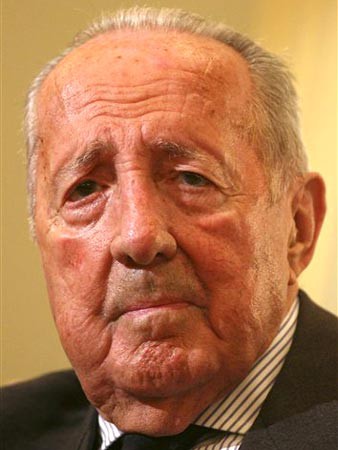 Die Ukraine-Krise bestimmt nicht nur die Medien, sondern auch die Weltpolitik der letzten Monate. Der Konflikt zwischen Russland und den USA hat sich wieder verschärft, Europa laviert zwischen Sanktionen und Wirtschaftsinteressen, während Russland sich lDie Ukraine-Krise bestimmt nicht nur die Medien, sondern auch die Weltpolitik der letzten Monate. Der Konflikt zwischen Russland und den USA hat sich wieder verschärft, Europa laviert zwischen Sanktionen und Wirtschaftsinteressen, während Russland sich lieber Asien zuwendet. Peter Scholl-Latour mit seiner Analyse der Entwicklung des postsowjetischen Raums im Exklusiv-Interview für die Stimme Russlands.
Die Ukraine-Krise bestimmt nicht nur die Medien, sondern auch die Weltpolitik der letzten Monate. Der Konflikt zwischen Russland und den USA hat sich wieder verschärft, Europa laviert zwischen Sanktionen und Wirtschaftsinteressen, während Russland sich lDie Ukraine-Krise bestimmt nicht nur die Medien, sondern auch die Weltpolitik der letzten Monate. Der Konflikt zwischen Russland und den USA hat sich wieder verschärft, Europa laviert zwischen Sanktionen und Wirtschaftsinteressen, während Russland sich lieber Asien zuwendet. Peter Scholl-Latour mit seiner Analyse der Entwicklung des postsowjetischen Raums im Exklusiv-Interview für die Stimme Russlands.


